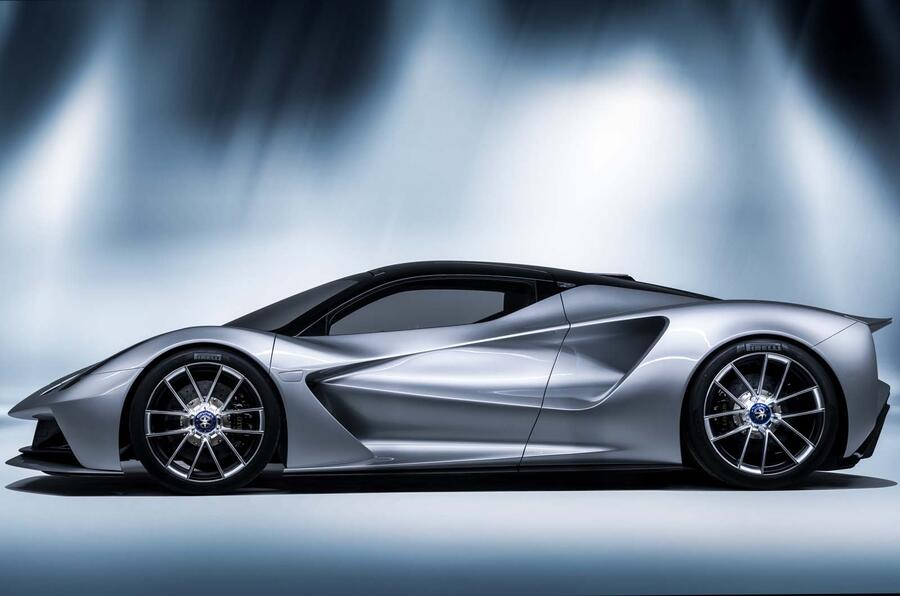“We wanted to use carbonfibre, and once we got into that we started looking at wishbones on racing cars. We looked at modern racing bicycles as well, and that informed some of the sections and forms that go in there. And that’s really become a very distinctive part of this interior. If you love modern racing bikes or componentry on racing cars, you’ll recognise that.”
“It’s a nice shape to use as well, with the wing profile, and adds a strong aeronautical flavour on the whole car. It’s very distinctive,” Carr added. “There’s a certain luxury to space and in such cars you can feel very claustrophobic. This feels open.”
That’s in stark contrast to another upcoming hypercar, the Aston Martin Valkyrie, with the implication that the two British hypercars will be quite different, in ethos as well as propulsion.
“We wanted, if this doesn’t sound ridiculous, a really usable hypercar,” said Carr. “The Evija is very much a road car. But obviously the performance credentials of this car mean that it can be driven on the track.

“Certainly from our side the work we’ve done on the aerodynamics means that it’s going to be an extremely quick car, generating a huge amount of downforce, which means it can be driven at high speeds. It’s going to be a stable car wherever it’s driven.”
Q&A with Russell Carr, design director, Lotus Cars
Tell us about the way air moves around this car.
“Something very Lotus which we’ve taken to another level is the aerodynamics. It’s always been part of our history and motorsport: in the ’60s we were among the first teams putting wings on cars, we had ground effects in the ’70s and streamlining way back in the ’50s. With this car, the philosophy was that we wanted to harness the airflow over the body of the car, but also through the body of the car. We’re not the first people to do it, but we wanted to do it in a very sculptural manner that would give a different aesthetic to the car.”
What does that mean for aesthetics?
“When you look at the car from the outside you see familiar volume, we hope a very beautiful-looking car. It’s important that it’s beautiful in the first place. But as you walk around it you start to see openings that go through the car, which allow the air to pass through. As I say, that gives it a different aesthetic, draws the eye through the car and over the car, and gives it a great sense of movement.”
Read more